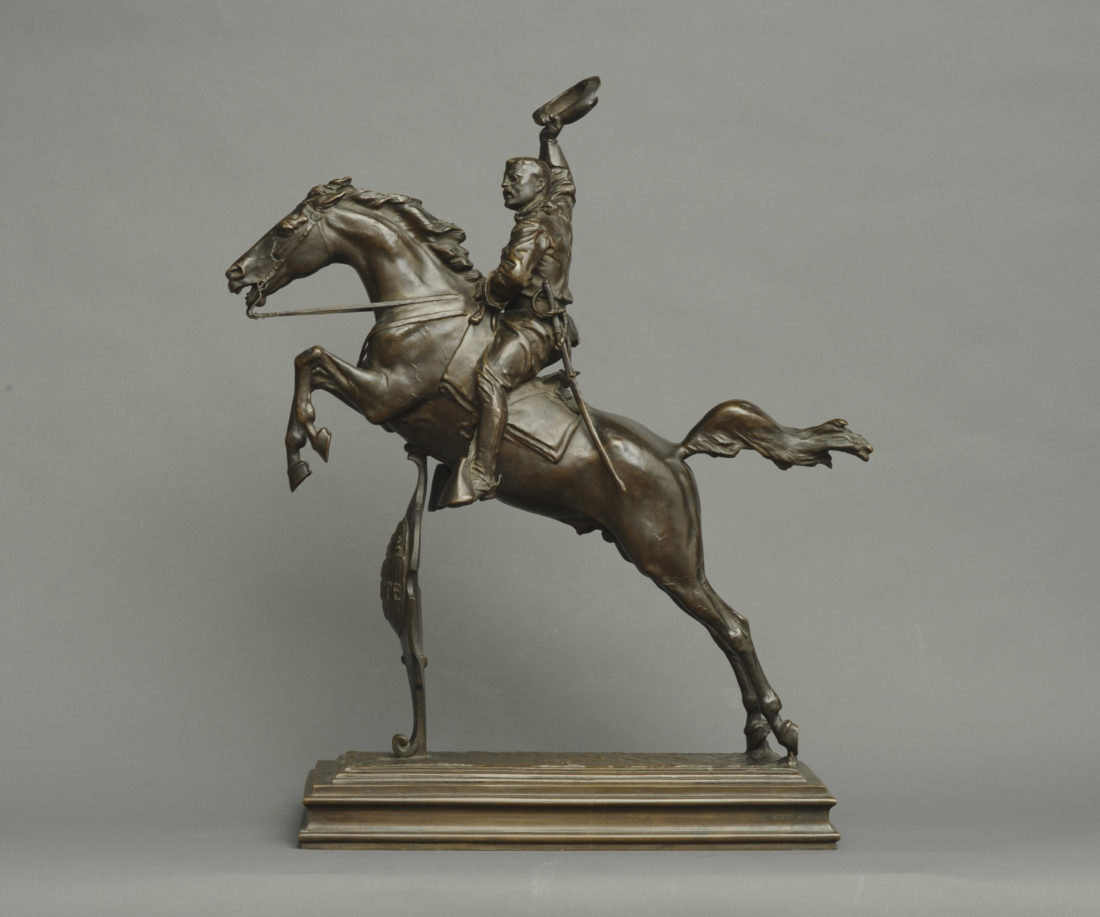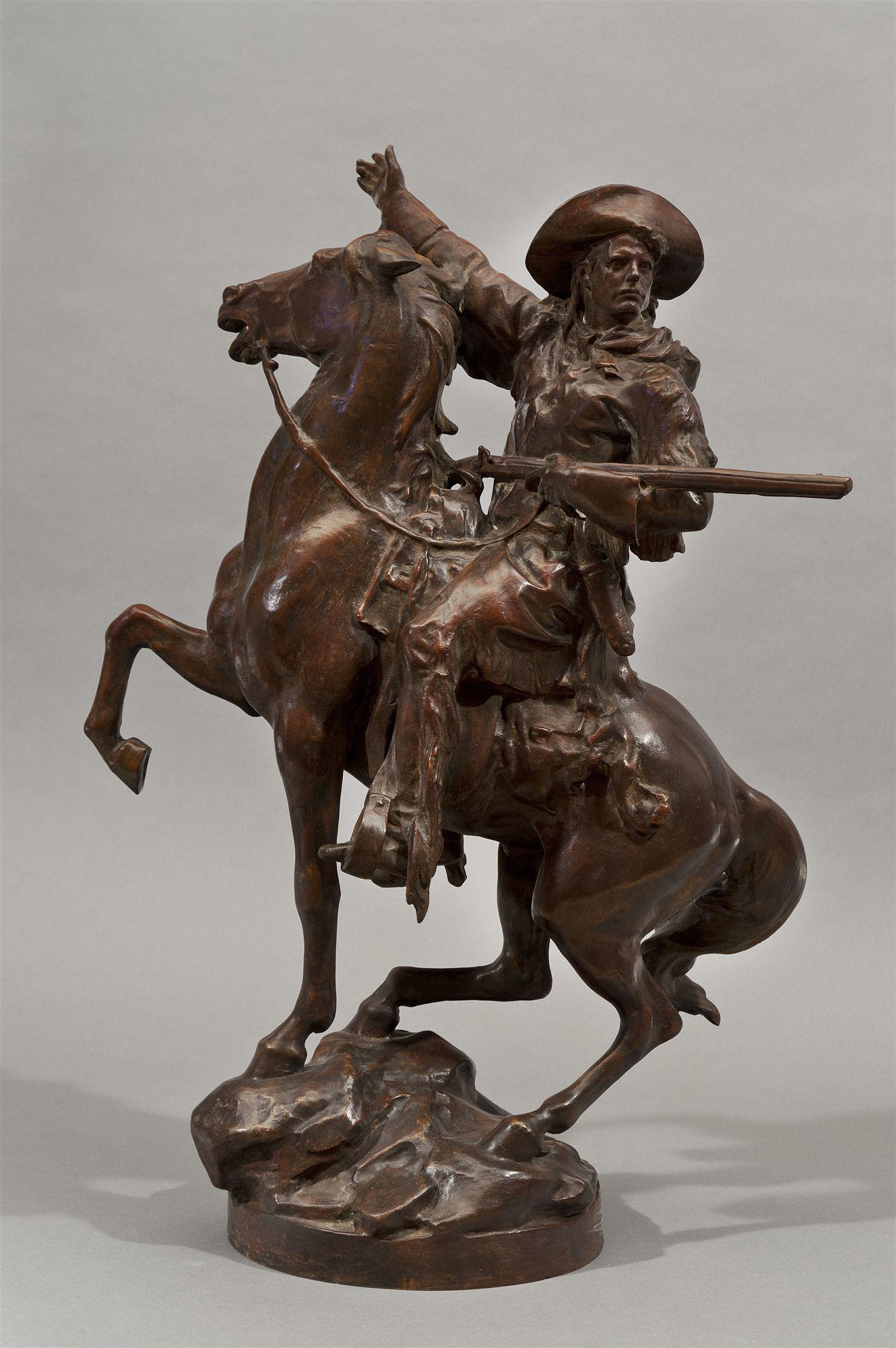Frederick William MacMonnies was born on September 28, 1863, in Brooklyn Heights, New York. His father was a prosperous Scottish immigrant who was one of the founders of the Atlantic Yacht Club in New York.
MacMonnies began his art studies in 1878 at a school in lower Manhattan, and soon came to the attention of the sculptor Augustus Saint-Gaudens, whose masterwork, the Farragut Monument, was soon to establish him as America’s premiere sculptor. Saint-Gaudens employed MacMonnies as a studio errand boy for two years before finally recognizing his talent and allowing him to become a formal apprentice. MacMonnies studied at the Art Students League, the National Academy of Design, and Cooper Union before leaving New York for Paris in 1884. He attended the Academie Colraossi and studied feverishly for the entrance examinations for the Ecole des Beaux-Arts. MacMonnies was accepted to the Ecole des Beaux Arts in 1886, and he entered examples of his work into the 1889 Spring Salon, receiving an honorable mention instead of the gold medal that he had hoped for.
In 1889 MacMonnies won his first commission, creating a statue of Nathan Hale for the Sons of the Revolution of the State of New York. A fountain figure commission for the banker Edward Dean Adams soon followed, and this piece was produced in edition in a reduced size by four different foundries. MacMonnies subsequently produced scaled-down editions of many of his sculptures, which became very popular and proved extremely lucrative for the artist.
For the 1893 World’s Columbian Exposition in Chicago MacMonnies completed the allegorical Barge of State, which measured 18 feet high by 30 feet long. This monumental fountain piece earned great acclaim for the sculptor, but not as much as his next piece, Bacchante and Infant Faun. When the piece was considered for the Boston Public Library’s courtyard a pandemonium broke out over the question of the sculpture’s morality, and a heated public debate raged over the next seven months until Bacchante and Infant Faun was finally withdrawn. In the late 1890’s and the first years of the new century MacMonnies completed several commissions that incorporated equestrian themes, including a statuette of Theodore Roosevelt, a monument to Kit Carson, and a monument to General Goerge B. McClellan.
MacMonnies gave up sculpture for painting between 1900 and 1904, but he found portraiture to be an ordeal and his two-dimensional work did not elicit a favorable response from the critics or the public. The advent of 20th century modernism enraged MacMonnies, and he continued to work in the Beaux-Art tradition that had made him wealthy and famous. His last major work was the colossal Marne Battle Monument, which was given to France as a gift from the American people after its completion in 1924. Frederick MacMonnies died on May 22, 1937 in New York at the age of 73.






